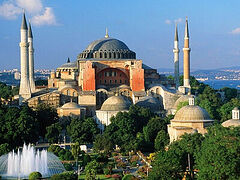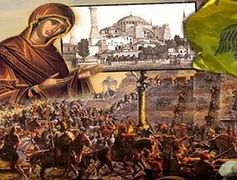Source: Mystagogy
December 21, 2021
Many may not be aware that the Church of Hagia Sophia in Constantinople was built to be aligned along the sunrise on winter solstice. The same is true for the Church of Hagia Sophia in Thessaloniki, which was modeled after that in Constantinople in the 8th century.
Hagia Sophia was therefore designed so that once a year, the first light of dawn after the longest night of winter, that is, on December 21st, enters the sacred temple, symbolizing in this way the birth Christ. Therefore, every year can be witnessed the rays of the sun piercing through the small window above the entrance of Hagia Sophia.
... Read the rest at Mystagogy.





